A little over 150 years ago, over 30,000 hand-cut and applied samples of Indian textiles were painstakingly arranged into an album series to educate and inspire the commercial and design industries in India and the UK. Its creator, John Forbes Watson, called them ‘trade museums’.
Watson will be delighted to tour the ‘India in Fashion’ exhibition at the recently opened Nita Mukesh Ambani Cultural Center (NMACC) in Mumbai, which documents the country’s influence on global fashion in modern times. The exhibition begins with a stunning armadillo dress and an eye-catching pair of shoes, notable for their unconventional shape and covered in scales of iridescent paillettes, which the late British designer Alexander McQueen brought to the table for his Spring/Summer 2010 show, Plato. K was designed for Atlantis. The costume is paired with a large framed scene of a jeweled beetle, Sternocera ruficornis – its bright greenish-blue wings have been used frequently in special embroidered garments in India since the 15th century.
Alexander McQueen’s Armadillo Boots
, Photo Credit: Deepti Sasidharan
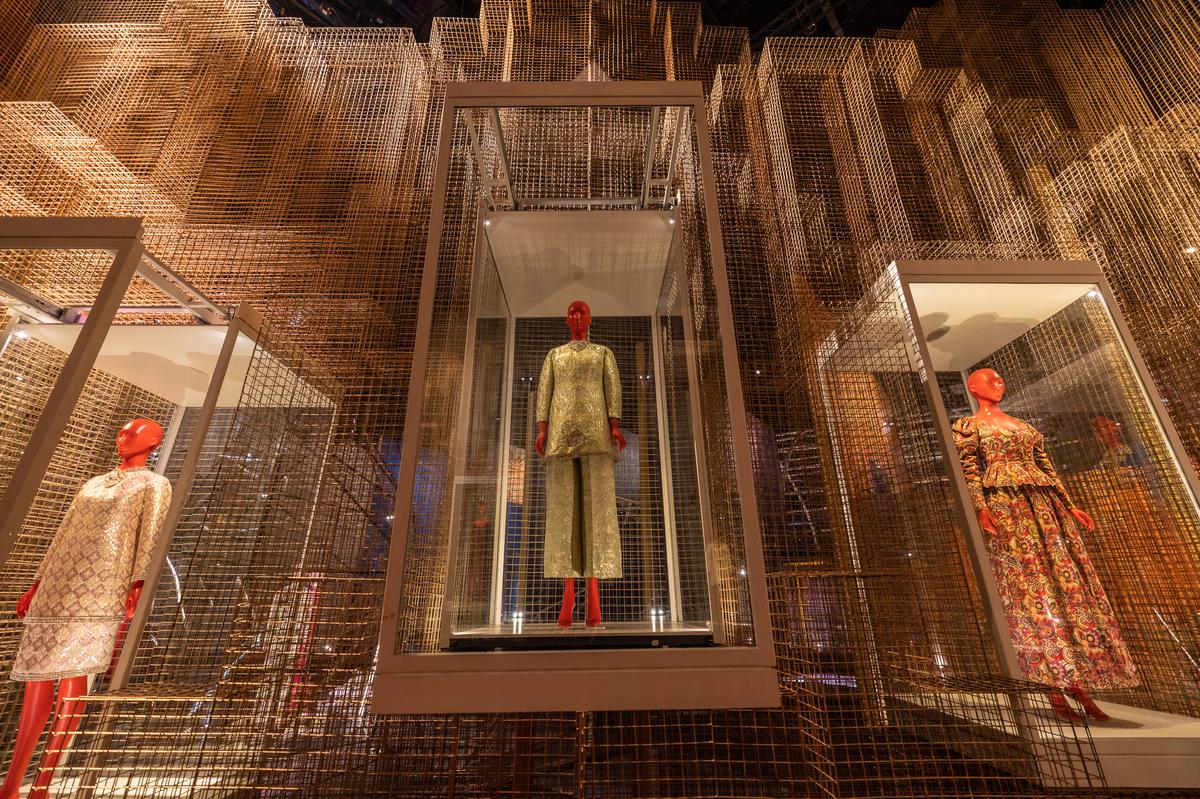
ysl chapter
, Photo Credit: Mitsun Sony
Fascinated, British women in India commissioned their gowns with this decorative element by the end of the 18th century and it soon spread to the world of costume in the next century. From the iconic ‘Peacock Dress’ worn by Baroness Curzon at the Delhi Durbar in 1903 to a painting by American artist John Singer Sargent to celebrate the king’s coronation, these dazzling green jewels captured the fashionable imagination.
This example of a quiet resonance between India and the West is presented by British journalist and curator Hamish Bowles in this exhibition through nearly 140 costumes, carefully selected and curated from some of the largest museums and formidable archives around the world Are. It is set up in a facility of approximately 50,000 square feet, with climate control capabilities making it possible to host international art exhibitions of this scale for the first time in India.
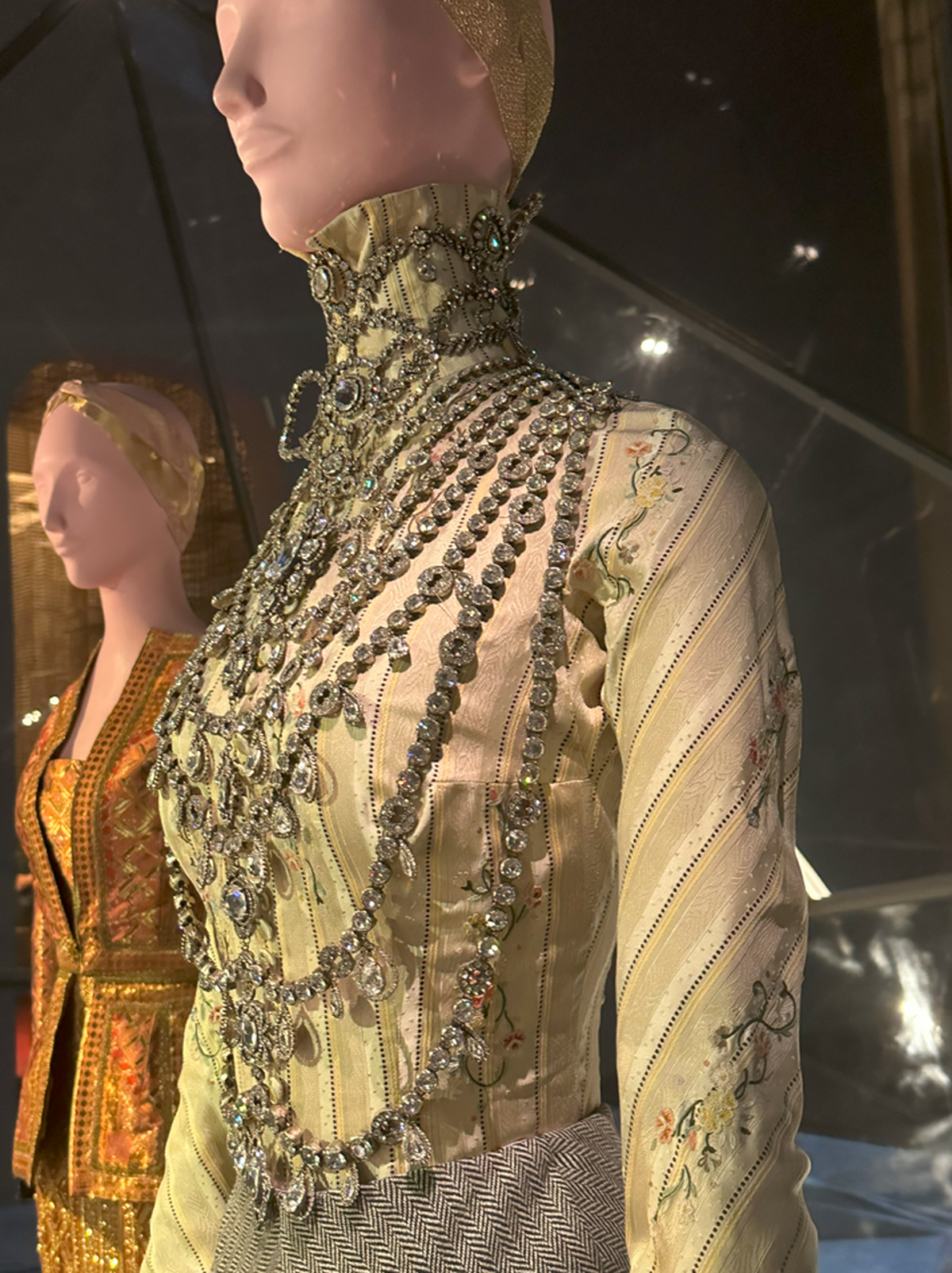
John Galliano for Christian Dior – Haute Couture Autumn-Winter 1997. These types of necklaces, while representing high fashion, directly point to Indian royalty and heritage.
, Photo Credit: Deepti Sasidharan
Intricate Weaving and Dramatic Locations
Presented as 10 volumes – unseen haute couture archival pieces drawn from 18th-century Dutch costumes of chintz, an iconic colonial trade fabric, and Indian craft inspired jewellery, Yves Saint Laurent, Chanel, Dior and more – Mumbai’s display of curatorial skill in bringing so many is commendable. It also demanded the arduous task of writing to multiple institutions, often up to four years ahead, requesting these pieces of history.
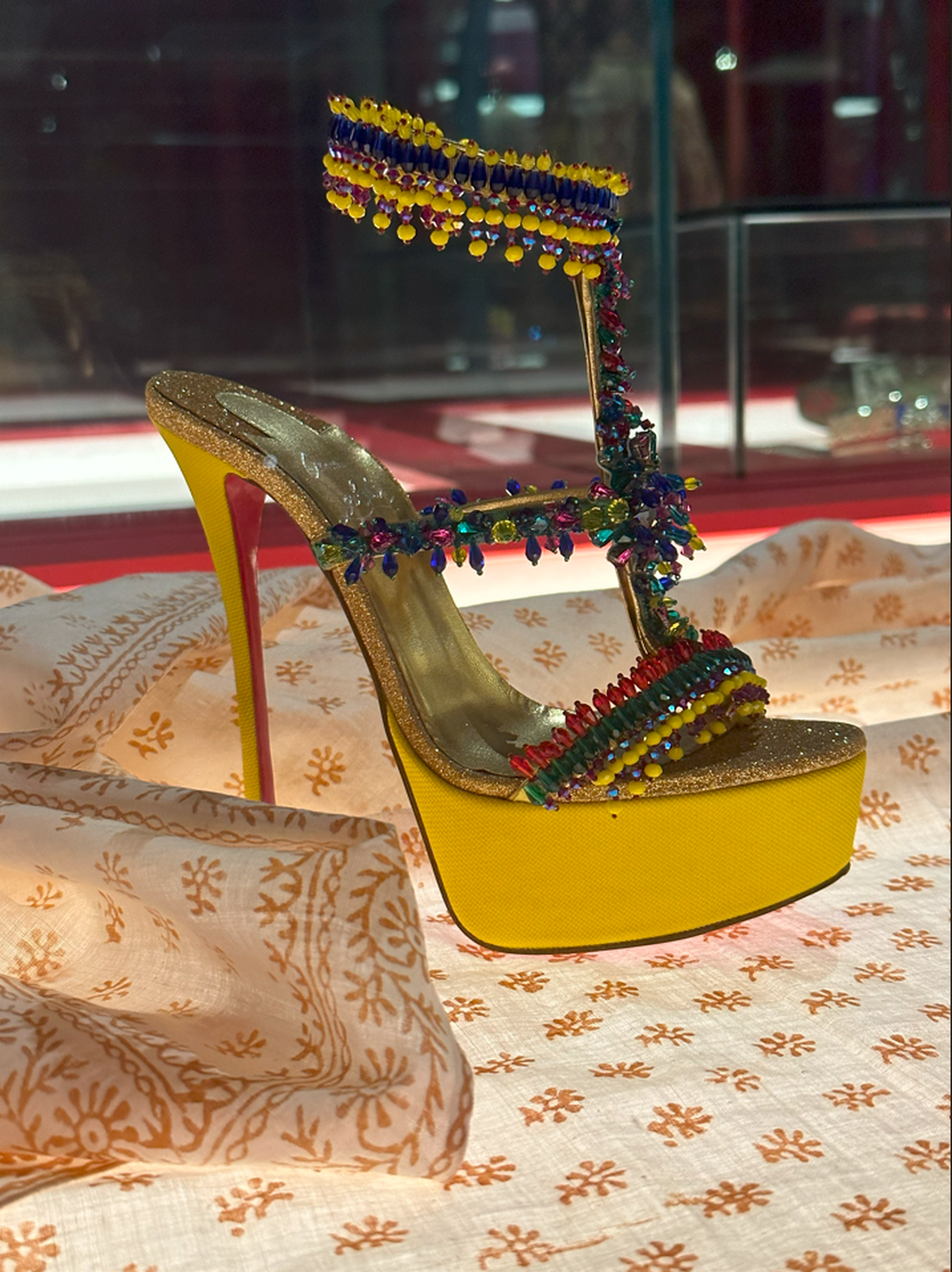
These ‘davibroda platos’ by Christian Louboutin are a fun reference to the infamous princess Sita Devi of Baroda, who rubbed shoulders with the crème-de-la-crème of European society and was known for her extravagant jewelry and lifestyle Used to go
, Photo Credit: Deepti Sasidharan
The emergence of the Ambani family in major international museums as patrons over the past two decades has been instrumental in bringing important pieces from museums such as the Metropolitan Museum in New York, the Royal Ontario Museum and others. Loan costs, wall-to-wall insurance, transportation, conservation care, and a long list of other requirements are also part of the lending process.
In exhibition design director Patrick Kinmonth, Bowles found an able partner. The designer references the fragmented narrative of the curator, examining fashion storytelling by referencing architecture and vibrant colors from India and weaving this into the theme. He brings in a scale and grandeur to museum exhibition design that the country isn’t quite used to – visually connecting space and affecting drama.
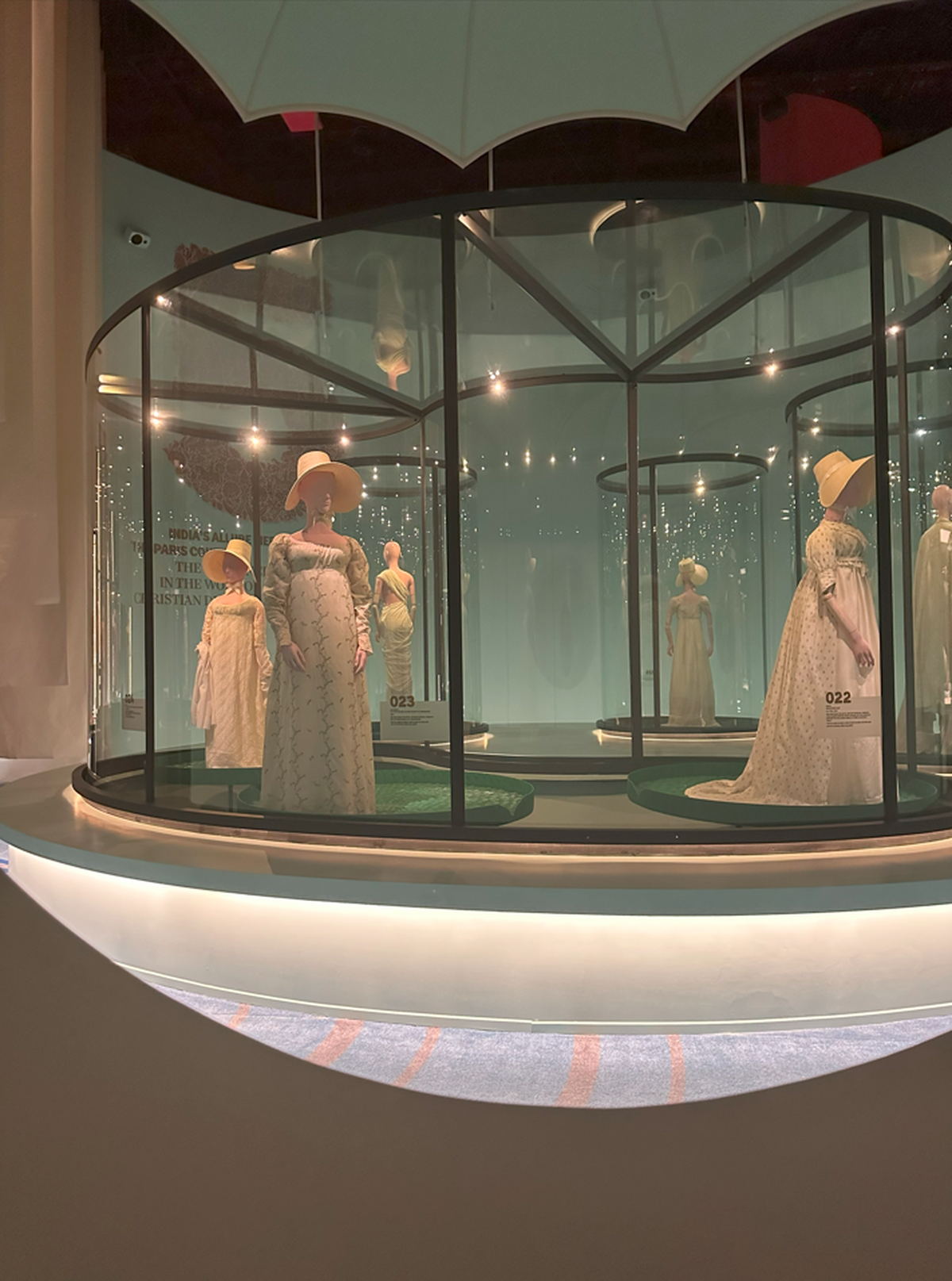
Chintz Zone, which lent itself to the setting of a Mughal garden
, Photo Credit: Deepti Sasidharan
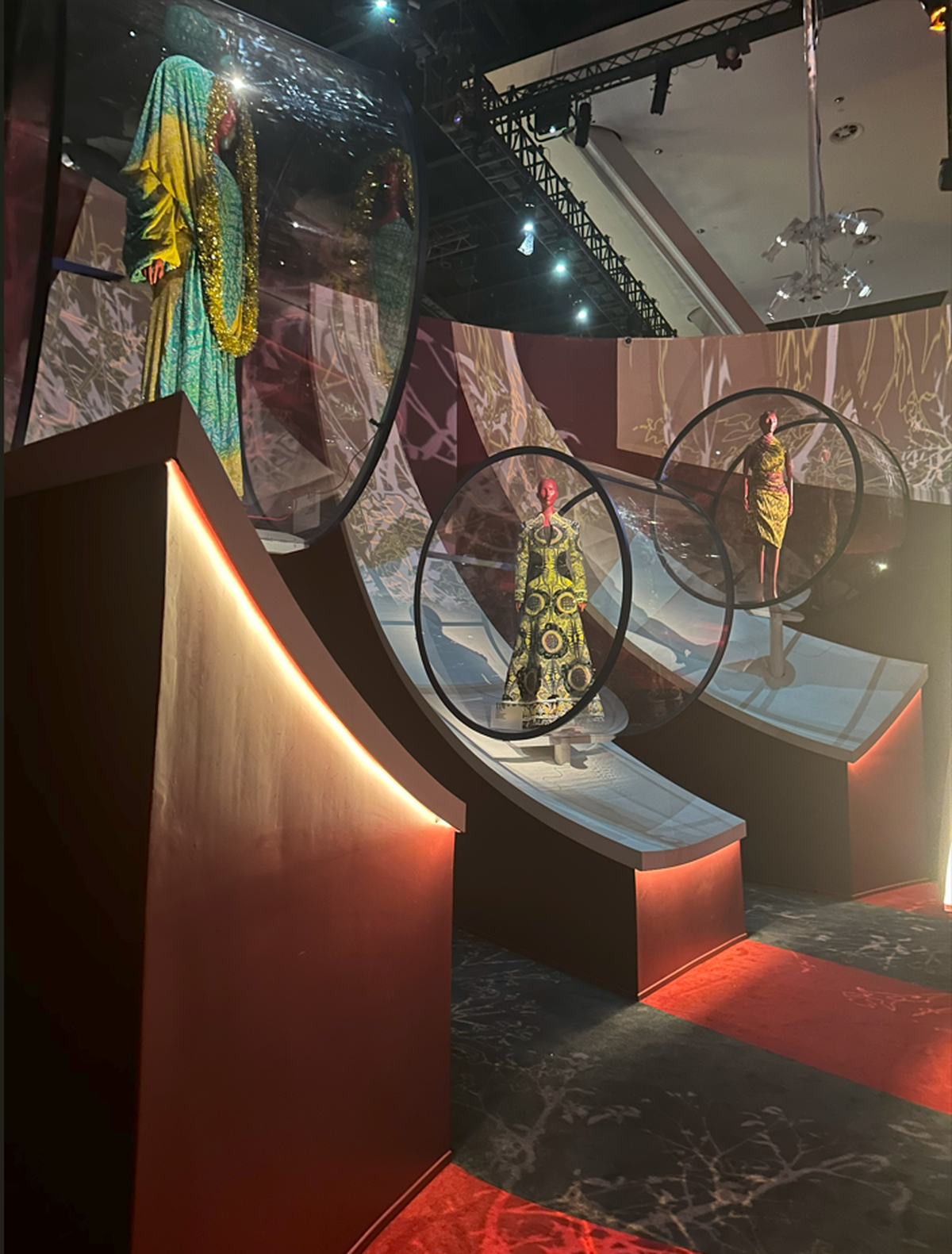
hippie trail chapter
, Photo Credit: Deepti Sasidharan
That said, an oddity here and there does disappoint. At the start of rehearsal, after a pleasant ingestion of 18th-century printed blocks Jama, walks down a dimly lit midnight blue ramp and is unexpectedly stunned with a dazzling Bollywood trio of filmy costumes, all perched on asymmetrical cylindrical bases and strangely lit by twinkling lights, almost a like the latter. Costumes from popular Hindi cinema worn by Kajol, Kareena Kapoor Khan and Priyanka Chopra Jonas, and a few steps later a mirrorwork dress by Madhuri Dixit are an uncomfortable reminder that even patrons’ preferences must be accommodated.
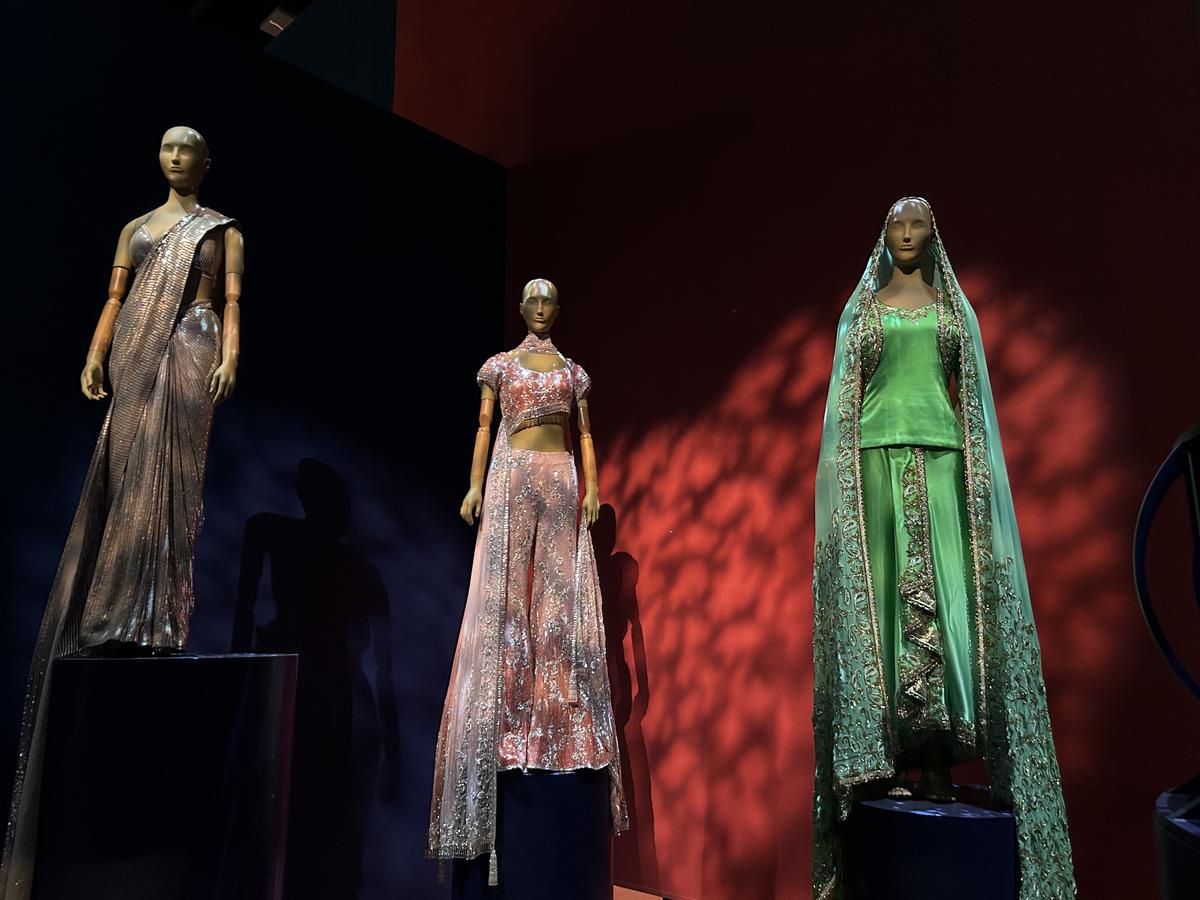
dazzling bollywood trilogy
, Photo Credit: Sonika L.
Bowles and Kinmonth tango smoothly in further sections – Dhakai muslin and floral chintz in a context of the dreamy whiteness of a marbled Mughal garden; A stunning inverted stepwell theme showcases YSL clothing; and the Great Exhibition of London 1851, originally set in a glittering glass crystal palace, translated here as ribbed white skeletal arches that tower over softly-lit exhibits. The fashion costumes have a dramatic pacing and many hours of careful planning involved in bringing together hundreds of details to tell the story of India.
Also featured throughout the exhibition are special commissions created by leading Indian designers such as Rahul Mishra, Ritu Kumar and Anamika Khanna that respond to thematic vintage crafts, embroideries or silhouettes. Easily a favorite with visitors, they speak highly of the curatorial decision to preserve contemporary times and enhance bridge archival inspirations. These pieces created in 2022 -2023 take history and catapult it into a vision of the future and continue the story of fashion by creating new chapters.
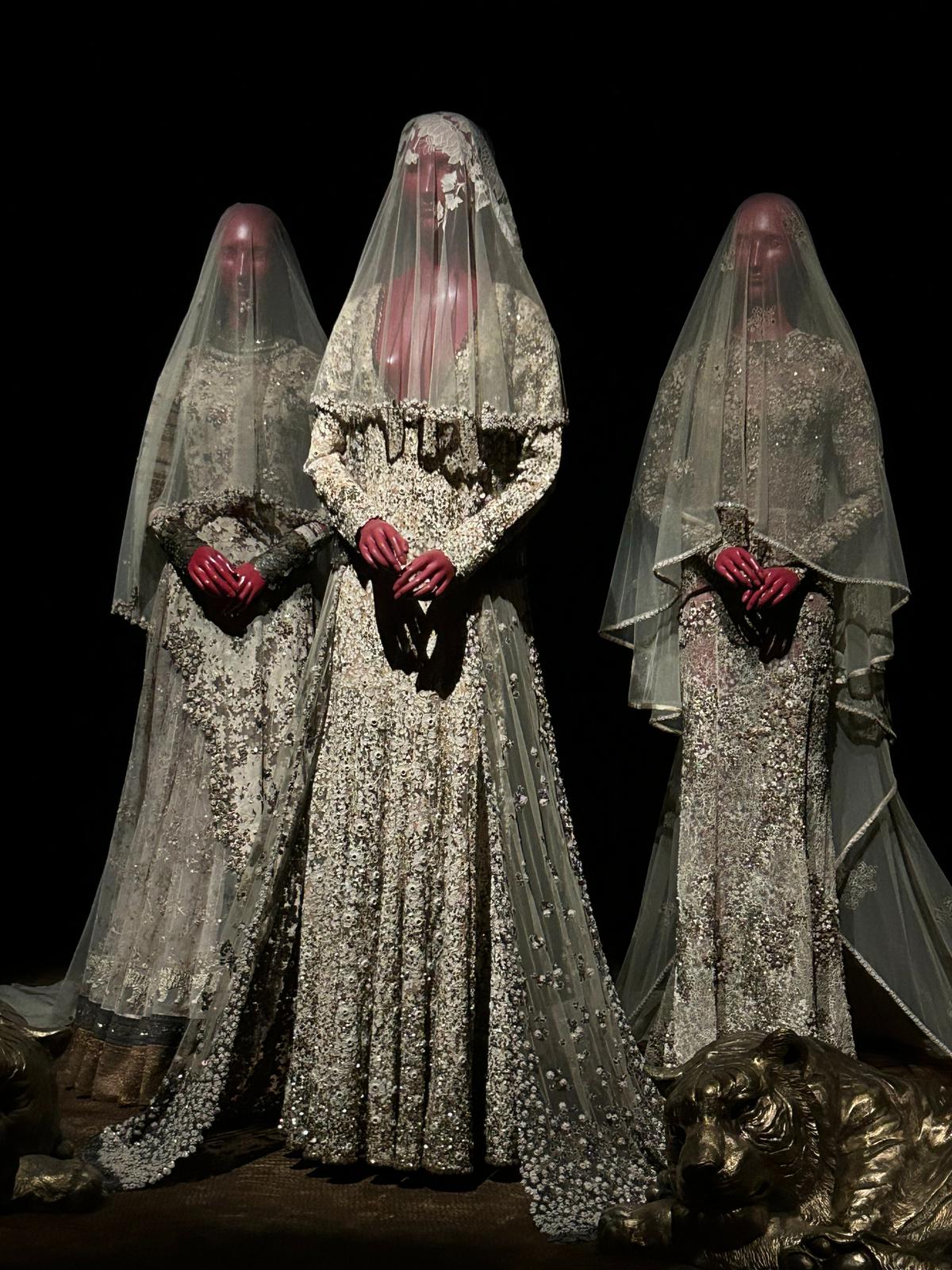
Design by Sabyasachi
, Photo Credit: Sonika L.
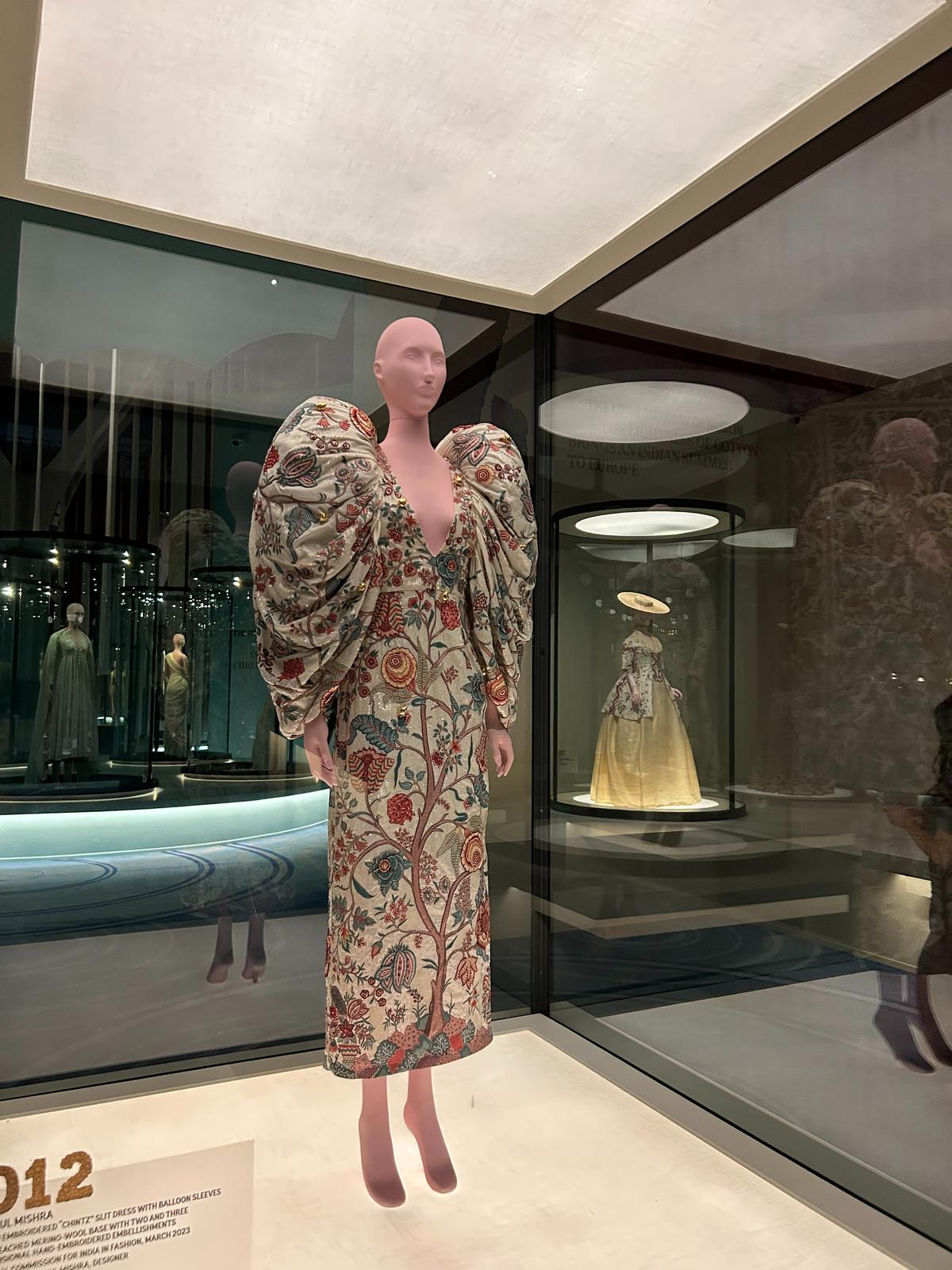
A chintz design by Rahul Mishra
, Photo Credit: Sonika L.
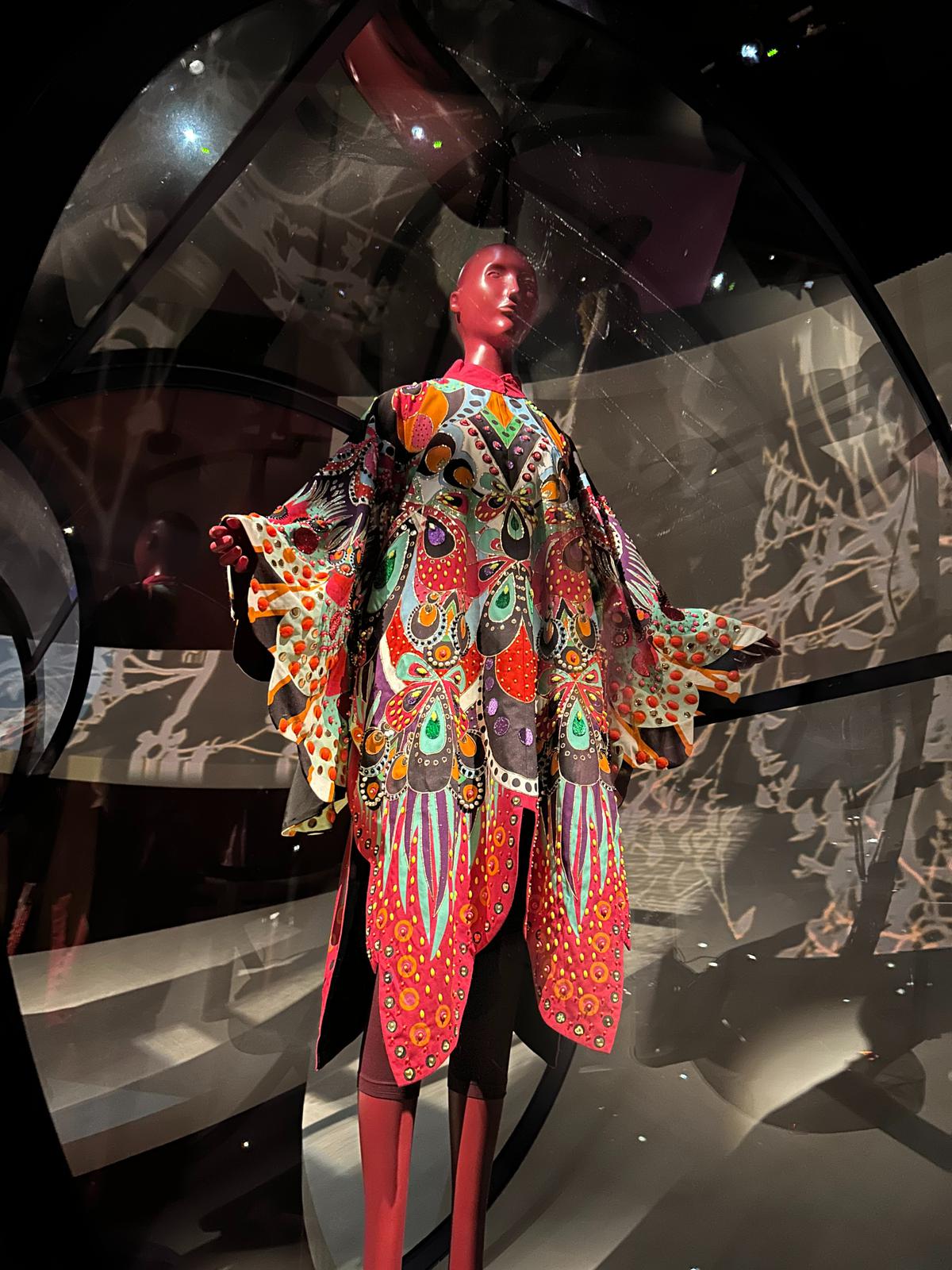
a manish arora outfit
, Photo Credit: Sonika L.
everything doesn’t work
However, several things fall short of what was clearly intended as a blockbuster exhibition. In many places the design prevents the visitor from taking a closer look at the dress, as some showcases move up and away from eye level. And for a showcase that trumpets free admission for fashion and art students, the intent of the instructional or educational material is poor.
The exhortations of the exhibition are inefficient and a great opportunity has been lost to share and understand great fashion through a textbook pedagogy of silhouette, form, pattern, cut and drapes. Some surprising examples of dress worthy of explanation, or at least sensible labelling, are in poor lighting and in full shade.
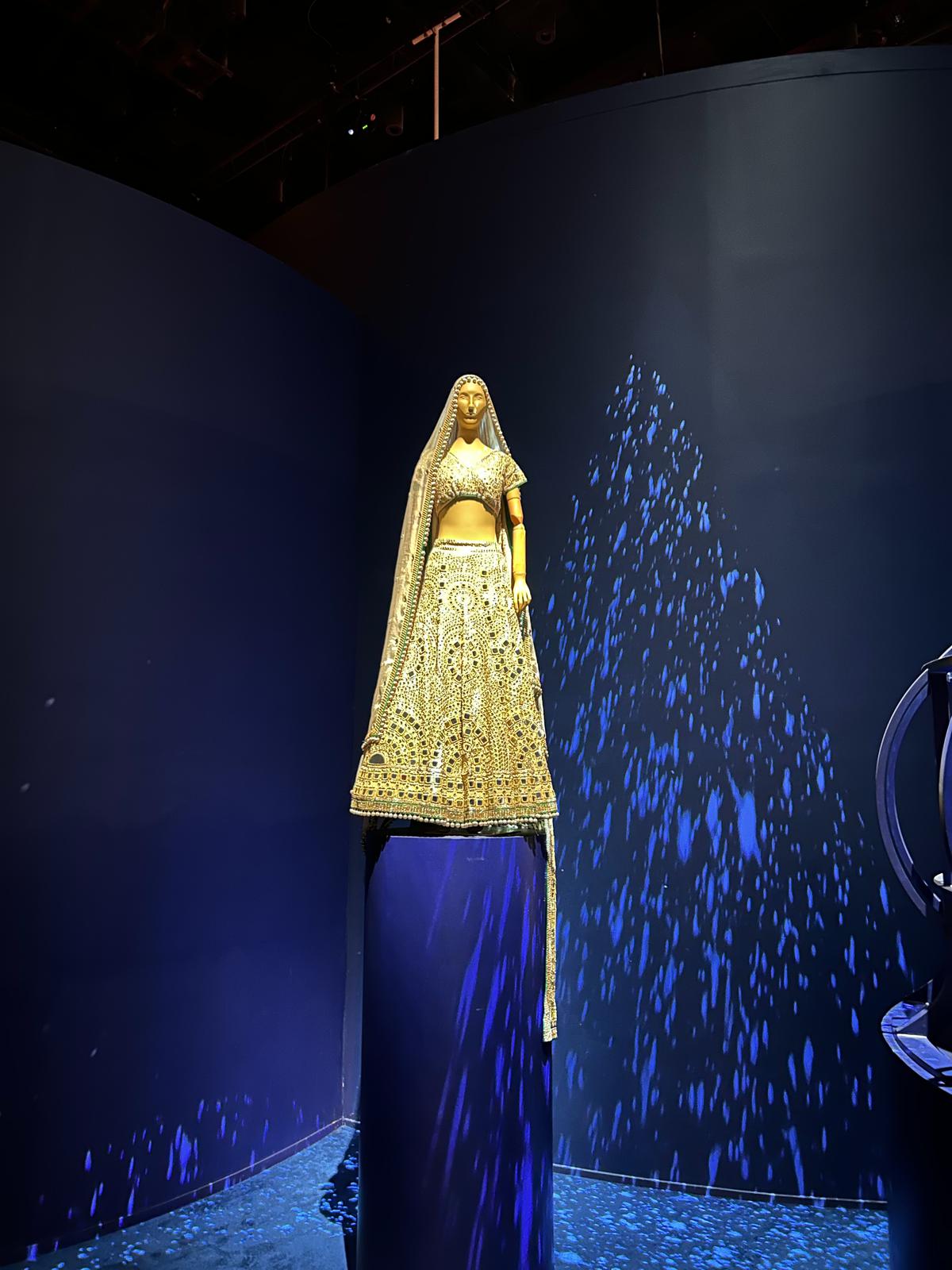
Some showcases move up and away from eye level
, Photo Credit: Sonika L.
The care and display of vintage textiles is a specialized craft, and many of the garments have been carefully installed by international lenders, other vintage dresses styled by celebrity sari drapers with safety pins, which harbor exquisite embroidery. In the long run, it may not be unwise for organizers to dip into the talented pool of textile conservators in our country so that rare books are not laid flat without the comfort of much-needed bookends or delicate textiles are rested without quality rollers . On-the-ground curatorial supervision is crucial in a show like this and ultimately, no amount of money can remedy that.
With ‘India in Fashion’ as its inaugural offering, NMACC clearly intends to impress the Indian audience, and succeeds in setting the bar high. One hopes that it can emerge as a cultural hub that brings truly world-class art to India and in future to a global audience as well.
by June 4; Tickets on in.bookmyshow.com
The author is an independent curator and founder-director of Eka Archiving Services.